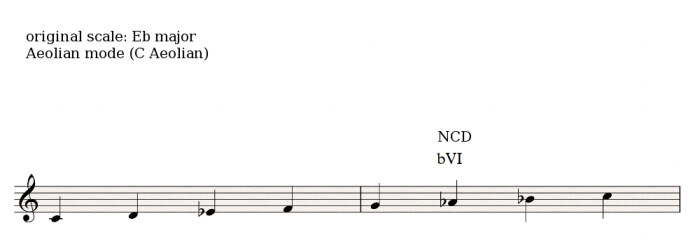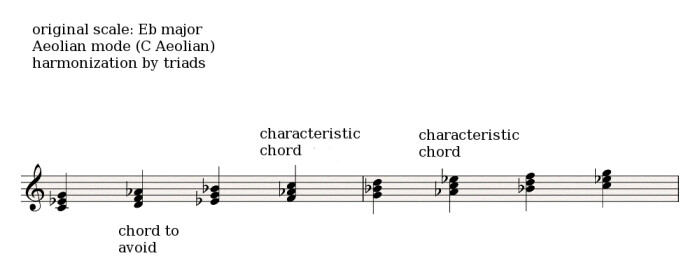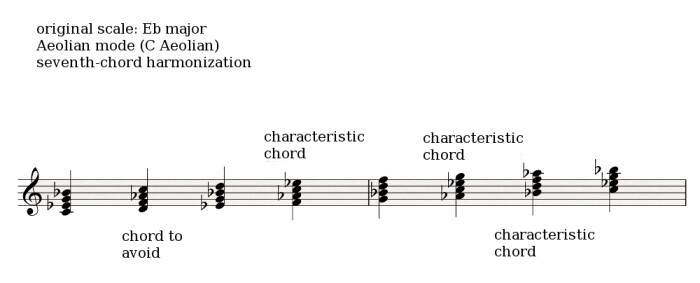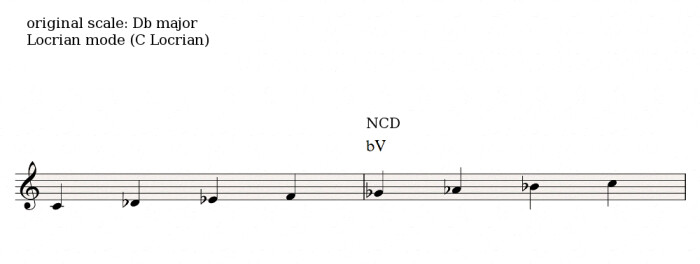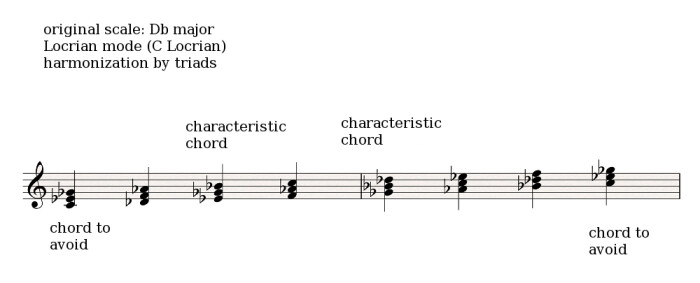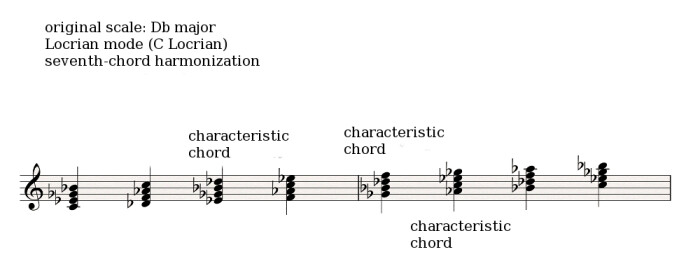In the previous article you saw the rules for the Phrygian, Lydian and Mixolydian modes. Today we'll look at the Aeolian and Locrian modes.

The Aeolian mode



Although you might be unaware, you already know the Aeolian mode pretty well, since it’s no other than the relative natural minor scale in the tonal system (see article 2). Among traditional tonal scales it is certainly the one that has a more modal feel to it, especially due to the absence of a leading-tone which prevents the V degree from being a dominant chord leading towards the root in the perfect cadence.
The Aeolian mode is based on the VI degree of the original scale. It’s associated to a minor chord: VI minor of the original scale. Its natural characteristic degree (NCD) is the VI degree minor (bVI).
Its characteristic chords are those of the II (avoid), IV and VI degrees.
As usual, you should avoid any cadences based on the original scale (or relative major in the tonal system), in other words:
- bVII7 – bIIIM7, which could be interpreted as the V7-IM7 perfect cadence of the original scale
- bVII7 – Vmin7, which could be interpreted as a V7 – IIImin7 motion of the original scale
- bVII7 – Imin7, which could be interpreted as the V7 – VImin7 perfect cadence of the original scale
- IVmin7 – bVII7, which could be interpreted as a IImin7-V7 semi-cadence of the original scale
- bVIM7 – bIIIM7, which could be interpreted as the IVM7-IM7 plagal cadence of the original scale
Do note that you should be careful with the bVII7 dominant chord, although it must not be necessarily avoided. In fact, as I told you in article 50, the only chord you should avoid in the modal system is the b5 diminished triad or –7(b5) diminished seventh chord. Which brings us to…
The Locrian mode
Because the Locrian mode, based on the VII degree of the original scale, is associated to these “taboo” chords of the modal system, b5 and –7(b5). And, actually, this is exactly what defines the nature of the Locrian mode’s tonic chord. Which makes it particularly hard to use. Some theorists even go as far as to disregard it completely. However, there are some music genres that resort to it a lot due to its particularly somber character, like death metal, for instance.



The Locrian mode is based on the VII degree of the original scale. Its natural characteristic degree is bV minor. Its characteristic chords are those based on the I (avoid), bIII and bV degrees.
The cadences you should avoid are the following:
- bVI7 – bIIM7, which could be interpreted as the V7-IM7 perfect cadence of the original scale
- bIIImin7 – bVI7, which could be interpreted as a IImin7-V7 semi-cadence of the original scale
- bVM7 – bIIM7, which could be interpreted as the IVM7-IM7 plagal cadence of the original scale
See you next time to keep on mode-ling some more!

